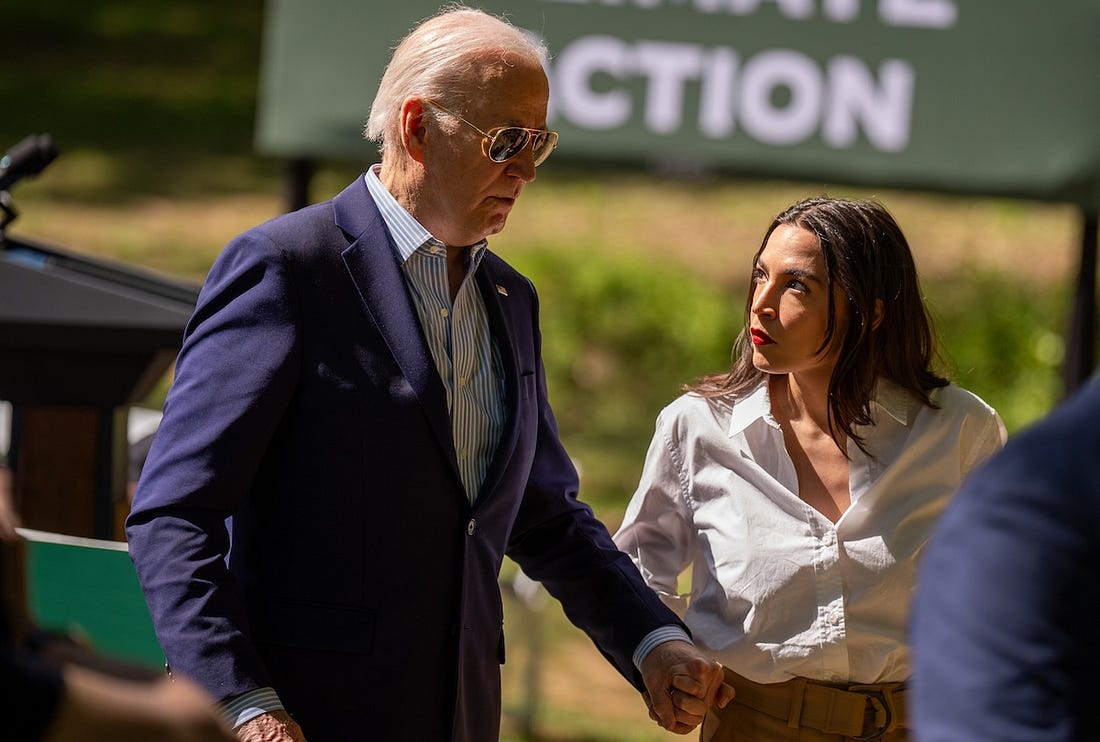|
 |
Is The Democratic Brand Toxic Or Fuzzy?
The answer is "yes," but the solution to both problems is the same.
Here are two questions to ask yourself, both of which will hopefully shed light on how Democrats should go about rebuilding, and why they all seem to think they need to do more than just fight Donald Trump:
Do you think Democrats are: a) awful; b) excellent; or c) meh/hard to say?
If you answered (a) to question one, do you think they’re awful because you prefer Republicans to Democrats; or because you’d like to think highly of Democrats, but they disappoint you by being too progressive or moderate or timid?
These questions are inspired by Farrah Bostic, who responded to yesterday’s newsletter with a thought-provoking comment. Key part: “do we really believe the problem Democrats have is a lack of a brand, or do we believe that the brand is damaged? Because those are different problems that might require different solutions.”
My short answer is: I think the Democratic Party brand is damaged, but in American politics that doesn’t present the same challenges as in commerce. The private marketplace is full of celebrities, influencers, products, and companies, all of whom compete with one another for audience, sales, profit, and so on. By contrast, there are only two major political parties, and one must win.
A party with a toxic brand would obviously be better off being well-liked, but it will win anyhow if the other party is, um, toxicker. On the flipside, a commercial product with an incredibly toxic brand can still be profitable, whereas a party or candidate can have a much better image than cigarettes and still lose all power.
So we need to think about the challenge Democrats face much differently than a company like R.J. Reynolds might think about increasing its profits.
From here, I’ll try to answer the question at greater length, and make the case that—in American politics, unlike in business—the problems of having a fuzzy vs. toxic brand aren’t so different, and the solutions aren’t either.
SELF-HATING BLUE
Obviously a party can become so toxic or dysfunctional that it has to dissolve and reconstitute under a different banner with different leaders and institutions and priorities. But it’s hard to imagine this describing a party that lost one national election by 1.5 points, or (by allusion to history) that isn’t divided over an issue as morally stark as slavery.
I say the Democratic brand is toxic because very few Americans, when polled, say they have a positive or very positive view of the party. The party is, in this sense, significantly less popular than Donald Trump, who is toxically unpopular. But if the contest between Trump and Democrats were as simple as comparing top-line approval numbers, Democrats would be toast. Instead, they’re leading Republicans in the generic congressional ballot (though they aren’t exactly running away with it).
Clearly the disconnect here stems from the fact that many of the people who tell pollsters they disapprove of Democrats are liberals or progressives who are upset with the party for one reason or another.
NBC News broke down the question more granularly. In March, only seven percent of registered voters claimed to have a very positive view of Democrats; 20 percent had a somewhat positive view; 18 percent had a neutral view; 17 percent had a somewhat negative view; and 38 percent¹ had a strongly negative view.
So it may be more precise to say that the Democratic Party brand is toxic to many, ill defined to some, and adored by few. Let’s think through why that might be.
If you asked for my assessment, I'd say the Democrats’ current brand problem (why they are hated by many and loved by few) has multiple roots...
Subscribe to Off Message to unlock the rest.
Become a paying subscriber of Off Message to get access to this post and other subscriber-only content.
A subscription gets you:
| Subscriber-only posts and full archive | |
| Post comments and interact with me and the community | |
| Complete, ad-free videos, and bonus videos that won’t be available anywhere else |
